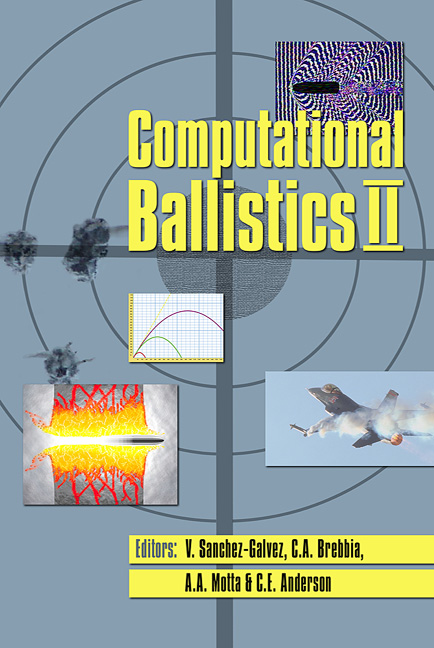Numerical Calculation Of The Unsteady Gas Flow Around A Projectile Moving Through A Gun Barrel
Price
Free (open access)
Transaction
Volume
40
Pages
11
Published
2005
Size
490 kb
Paper DOI
10.2495/CBAL050301
Copyright
WIT Press
Author(s)
V. Ponyavin, Y. Chen & D. W. Pepper
Abstract
The calculation of gas flow during the motion of a projectile in the gun barrel is a complicated computational task due of the presence of numerous factors, such as nonisothermicity, turbulence, and changes in the shape of the computational domain with time. In this study, an effort to calculate the characteristics of gas flow around a projectile during the motion of the projectile in a light gas gun barrel is undertaken. The flow is considered to be axisymmetric, nonstationary, nonisothermal, compressible, and turbulent. FLUENT, a finite volume-based commercial code, was used to calculate the flow around the projectile. During the motion of the projectile, the flow pattern behind the projectile changes from subsonic to supersonic. Results of the calculations show the appearance of shock waves within the gun barrel reflecting off the projectile surface and barrel walls, inducing combustion and accelerating the projectile to higher speeds as it proceeds down the barrel. Keywords: CFD, shock waves, starting process, dynamic meshes, moving projectile. 1 Introduction The main principles associated with motion of a projectile in a gun barrel were initially proposed by Hertzberg et al [5] for projectiles experiencing subsonic combustion associated with oblique detonation. The research is based on the ramjet principle. A sharp-nosed projectile, which resembles the centrebody of a conventional ramjet, runs inside a tube. The tube acts as the outer cowling of the
Keywords
CFD, shock waves, starting process, dynamic meshes, moving projectile.




